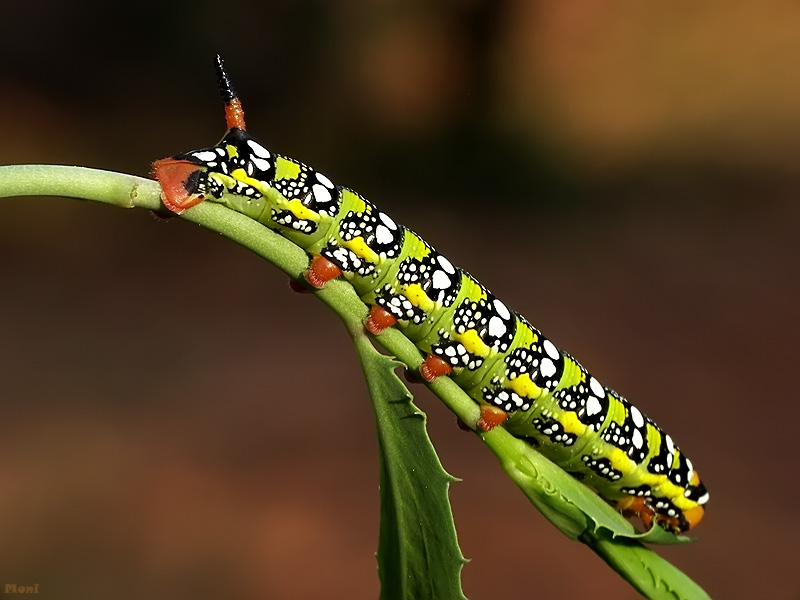martes, 11 de septiembre de 2007
Hyles euphorbiae
Kingdom: Animalia
Subkingdom: Bilateria
Infrakingdom: Ecdysozoa
Phylum: Arthropoda
Class: Insecta
Order: Lepidoptera
Family: Sphingidae
Subfamily: Macroglossinae
Genus: Hyles
Species: euphorbiae (Linnaeus, 1758)
The newly-hatched larva measures approximately 4mm and is off-white with a black head and horn. With feeding, this primary colour is soon replaced by dark olive black which then lightens with further feeding. At this stage it rests low down on the hostplant during the day, at dusk moving up the stem to feed during darkness in the company of others. After the first moult, the characteristic bright pattern appears, superimposed on a now light greenish yellow-brown background. With each successive moult this becomes more startling until, eventually, the fully-grown larva can feed quite openly, relying on its aposematic coloration for protection. Although the basic pattern remains the same, size and colour are just as variable in the larva as in the adult insect. The dorso-lateral line of eye-spots may be red, yellow, green, white or orange, set in a ground colour which varies from green through light yellowish brown to black.
At all stages, its feeding powers are prodigious. Vast quantities of leaves and also soft stems are consumed between spells of basking, which it does more frequently as it grows. If disturbed, a thick stream of dark green fluid is ejected from the mouth towards the attacker, accompanied by violent body twitching from side to side. Prior to pupation, the larva is very active and wanders a great distance at a very fast pace, finally pupating a considerable way from the hostplant.
The larvae are very sensitive to photoperiod and temperature, and will not go into diapause if exposed to long-day conditions of 17 hours light and 7 hours darkness and >18°C.
Original
Traductor
Suscribirse a:
Enviar comentarios (Atom)

3 comentarios:
¿Porqué solo en inglés?
Una oruga de lo mas vistosa, preciosa foto monica. A ver si te pillo algo en castellano
No lo encontré en castellano Sixto! siempre está la opción del traductor, pero ya sabemos como funcionant...
Publicar un comentario